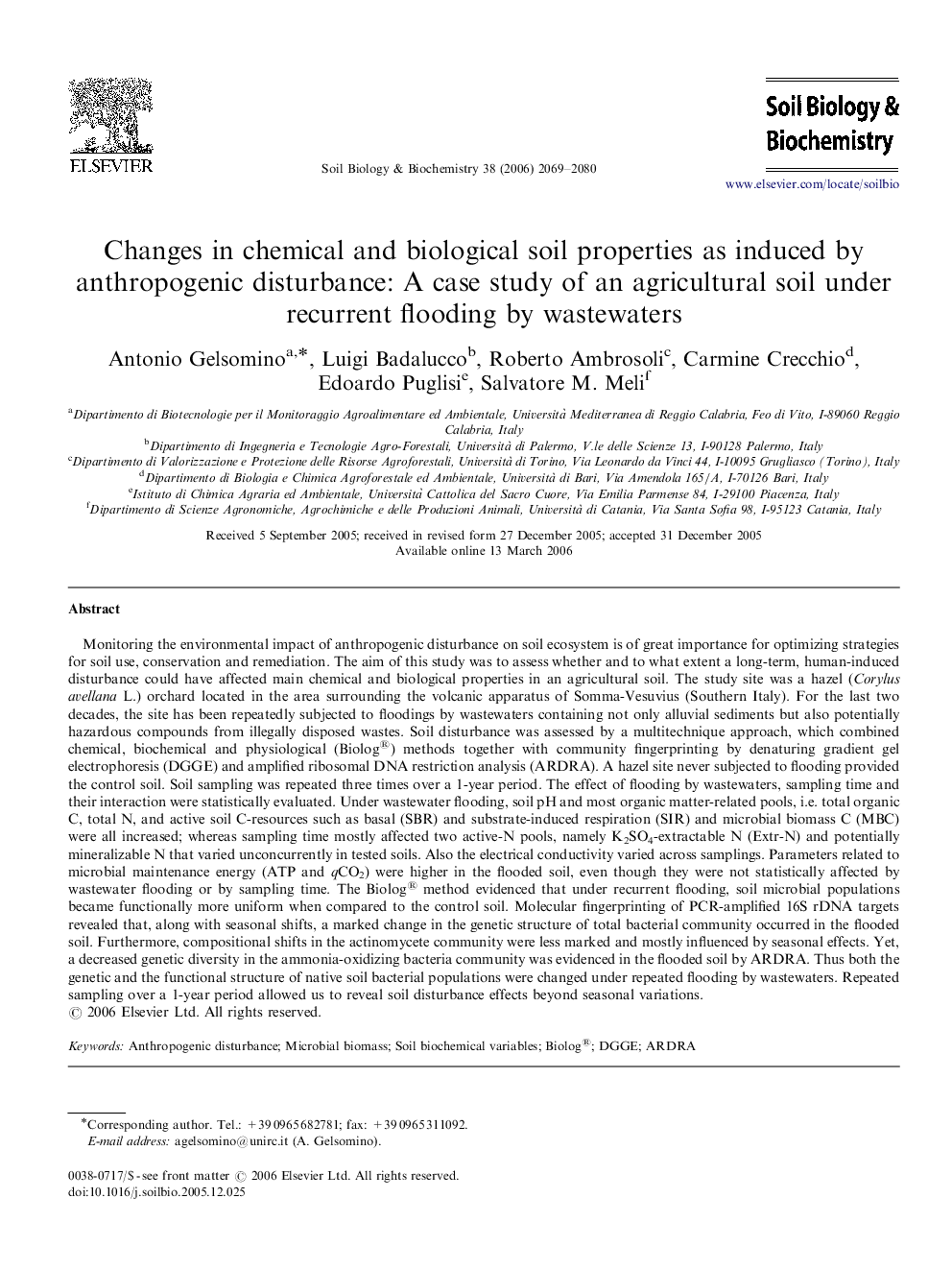| کد مقاله | کد نشریه | سال انتشار | مقاله انگلیسی | نسخه تمام متن |
|---|---|---|---|---|
| 2027173 | 1070097 | 2006 | 12 صفحه PDF | دانلود رایگان |

Monitoring the environmental impact of anthropogenic disturbance on soil ecosystem is of great importance for optimizing strategies for soil use, conservation and remediation. The aim of this study was to assess whether and to what extent a long-term, human-induced disturbance could have affected main chemical and biological properties in an agricultural soil. The study site was a hazel (Corylus avellana L.) orchard located in the area surrounding the volcanic apparatus of Somma-Vesuvius (Southern Italy). For the last two decades, the site has been repeatedly subjected to floodings by wastewaters containing not only alluvial sediments but also potentially hazardous compounds from illegally disposed wastes. Soil disturbance was assessed by a multitechnique approach, which combined chemical, biochemical and physiological (Biolog®) methods together with community fingerprinting by denaturing gradient gel electrophoresis (DGGE) and amplified ribosomal DNA restriction analysis (ARDRA). A hazel site never subjected to flooding provided the control soil. Soil sampling was repeated three times over a 1-year period. The effect of flooding by wastewaters, sampling time and their interaction were statistically evaluated. Under wastewater flooding, soil pH and most organic matter-related pools, i.e. total organic C, total N, and active soil C-resources such as basal (SBR) and substrate-induced respiration (SIR) and microbial biomass C (MBC) were all increased; whereas sampling time mostly affected two active-N pools, namely K2SO4-extractable N (Extr-N) and potentially mineralizable N that varied unconcurrently in tested soils. Also the electrical conductivity varied across samplings. Parameters related to microbial maintenance energy (ATP and qCO2) were higher in the flooded soil, even though they were not statistically affected by wastewater flooding or by sampling time. The Biolog® method evidenced that under recurrent flooding, soil microbial populations became functionally more uniform when compared to the control soil. Molecular fingerprinting of PCR-amplified 16S rDNA targets revealed that, along with seasonal shifts, a marked change in the genetic structure of total bacterial community occurred in the flooded soil. Furthermore, compositional shifts in the actinomycete community were less marked and mostly influenced by seasonal effects. Yet, a decreased genetic diversity in the ammonia-oxidizing bacteria community was evidenced in the flooded soil by ARDRA. Thus both the genetic and the functional structure of native soil bacterial populations were changed under repeated flooding by wastewaters. Repeated sampling over a 1-year period allowed us to reveal soil disturbance effects beyond seasonal variations.
Journal: Soil Biology and Biochemistry - Volume 38, Issue 8, August 2006, Pages 2069–2080